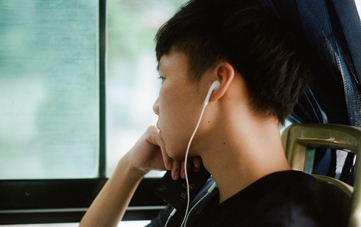Anxiety and Related Disorders Treatment
the anxiety program at ccebt
The Anxiety Program at the Chicago Center for Evidence Based Treatment includes a team of skilled clinicians dedicated to treating anxiety disorders in children, adolescents, adults, and families. We provide evidence-based therapy that is tailored to our clients individual and family needs. We also provide training and consultation for clinicians wishing to improve their clinical skills.
WHAT IS AN ANXIETY DISORDER?
We all experience anxiety or worry at times, and often it can help us to keep ourselves safe, focus, and plan ahead. Anxiety disorders are different. They last for an extended period of time, impact your ability to function in your daily life or cause extreme distress, and don’t often go away when a stressful event passes. Anxiety disorders are the most common disorders in both adults and children and there are research-backed treatments to help.
OUR TEAM
Our team of clinicians has extensive training in utilizing the evidence-based treatments below to treat concerns such as Generalized Anxiety Disorder (GAD), Social Anxiety, Specific Phobias, Obsessive Compulsive Disorder (OCD), Panic Disorder, Agoraphobia, Trichotillomania, and Illness Anxiety Disorder. We are currently conducting sessions both in-person and virtually via a HIPPA-compliant telehealth platform.
Cognitive-Behavior Therapy
Cognitive-behavior therapy (CBT) seeks to understand the connections between thoughts, behaviors and emotions in the maintenance of anxiety. This treatment approach allows patients to remain focused on the present and address ways to learn new thought and behavioral patterns. With the support of your therapist, patients learn skills to challenge thinking patterns, and learn how to navigate stressful situations and triggering events in more adaptive ways.


Cognitive-Behavior Therapy/Behavior Therapy
Cognitive-behavior therapy (CBT) seeks to understand the connections between thoughts, behaviors and emotions in the maintenance of anxiety. This treatment approach allows patients to remain focused on the present and address ways to learn new thought and behavioral patterns. With the support of your therapist, patients learn skills to challenge thinking patterns, and learn how to navigate stressful situations and triggering events in more adaptive ways.
Exposure Therapy
Exposure therapy helps patients address their fears and decrease their use of avoidance or other problematic behavioral patterns. Exposure with Response / Ritual Prevention (ERP) is a specific type of exposure therapy for Obsessive Compulsive Disorder. With ERP, you and your therapist would work together to identify obsessions and compulsions, practice facing fears, and learn to cope with the difficult emotions that arise without acting on compulsions or avoiding.

ACCEPTANCE AND COMMITMENT THERAPY
Acceptance and commitment therapy (ACT) is a type of cognitive-behavioral psychotherapy that focuses on acceptance, mindfulness, and values-driven behavioral change. With the support of your therapist, patients learn strategies to become more comfortable with and accept emotions and physical sensations, to stay present with experiences, build flexibility in the way that they think, and engage in values-driven goals.

Exposure Therapy
Exposure therapy (also called ERP) is considered the most effective treatment for anxiety disorders. This therapy helps patients address their fears and decrease their use of rituals, avoidance or other behavioral patterns. Exposure therapy and ERP are considered gold-standard treatments for all anxiety disorders (i.e., phobias, social anxiety, PTSD, GAD, OCD, panic, agoraphobia, health anxiety).
Habit Reversal Training and Stimulus Control
Habit reversal training (HRT) and stimulus control are typically used to address repetitive behaviors that are related to the body, including skin picking and hair pulling. This treatment helps patients assess patterns of these repetitive behaviors and implement new habits to reverse the likelihood that they will engage in skin picking, hair pulling, etc. HRT can be enhanced by utilizing skills and concepts from ACT.


Habit Reversal Training and Stimulus Control
Habit reversal training (HRT) and stimulus control are typically used to address repetitive behaviors that are related to the body, including skin picking and hair pulling. This treatment strategy helps patients assess patterns of these repetitive behaviors and implement new habits to reverse the likelihood that they will engage in skin picking, hair pulling, etc.
The Unified Protocol for Transdiagnositc Treatment of Emotional Disorders
The Unified Protocol is a model of treatment that is derived from Cognitive Behavioral Therapy. This treatment can be utilized across a range of disorders to aid patients in learning about their emotions, building awareness of their thoughts and behaviors, applying cognitive and behavioral coping skills, and changing behavior to meet their goals.

SPACE (Supportive Parenting for Anxious Childhood Emotions)
SPACE (Supportive Parenting for Anxious Childhood Emotions) is a parent focused treatment to help children and adolescents with anxiety, OCD, and related disorders. Workshops and groups will be offered periodically to learn and support parents. Please email contact@ccebt.com to express interest in learning more about SPACE offerings.

The Unified Protocol for Transdiagnositc Treatment of Emotional Disorders
The Unified Protocol is a model of treatment that is derived from Cognitive Behavioral Therapy. This treatment can be utilized across a range of disorders to aid patients in assessing emotional responses and developing new skills to reduce unwanted symptoms.
OUR LOCATIONS![]()


